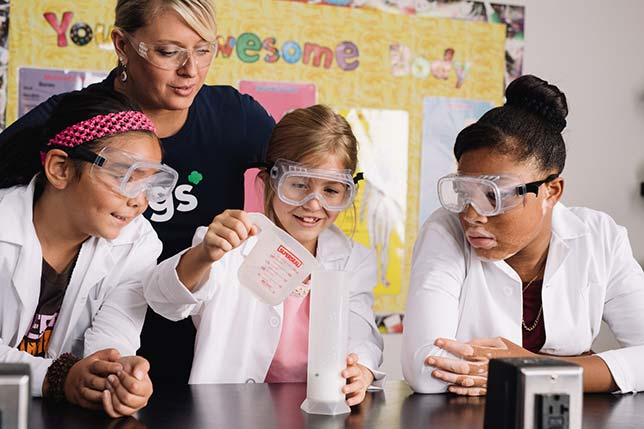Girl Scouts Launches Initiative to Put 2.5 Million girls through STEM Programs by 2025

The Girl Scouts of the USA (GSUSA) has launched a national initiative designed to help close the gender gap in STEM education and employment over the next eight years. The organization aims to raise $70 million put 2.5 million girls through their STEM programs by 2025.
The initiative is just the latest measure from the organization designed to address gender equity in STEM fields. GSUSA launched 23 STEM and outdoor badges earlier this year and plans to add 18 cybersecurity badges and a series of space science badges over the next two years.
"Girl Scouts are almost twice as likely as non–Girl Scouts to participate in STEM activities (60 percent versus 35 percent)," according to information released by the organizations, "and 77 percent of girls say that because of Girl Scouts, they are considering a career in technology."
"Girl Scouts has the largest pipeline of future female leaders available, and no place is this more important than in STEM fields," said Sylvia Acevedo, CEO of the Girl Scouts of the USA, in a prepared statement. "By working with individuals and companies that understand the importance of investing in all girls, we can fundamentally change the STEM pipeline and the future of its workforce. Girl Scouts is the only organization for girls with the expertise and reach to help pave the way for any young girl — no matter if she lives in middle America or a major city — to break barriers and achieve any dream she may imagine. For millions of girls, this means excelling in STEM — and I'm incredibly proud that the Girl Scout STEM Pledge will make that dream a reality and change the dynamics of women in these exciting fields."
To donate to the organization's STEM pledge, visit the donation page. To learn more about their STEM initiatives, visit girlscouts.org.
About the Author
Joshua Bolkan is contributing editor for Campus Technology, THE Journal and STEAM Universe. He can be reached at [email protected].